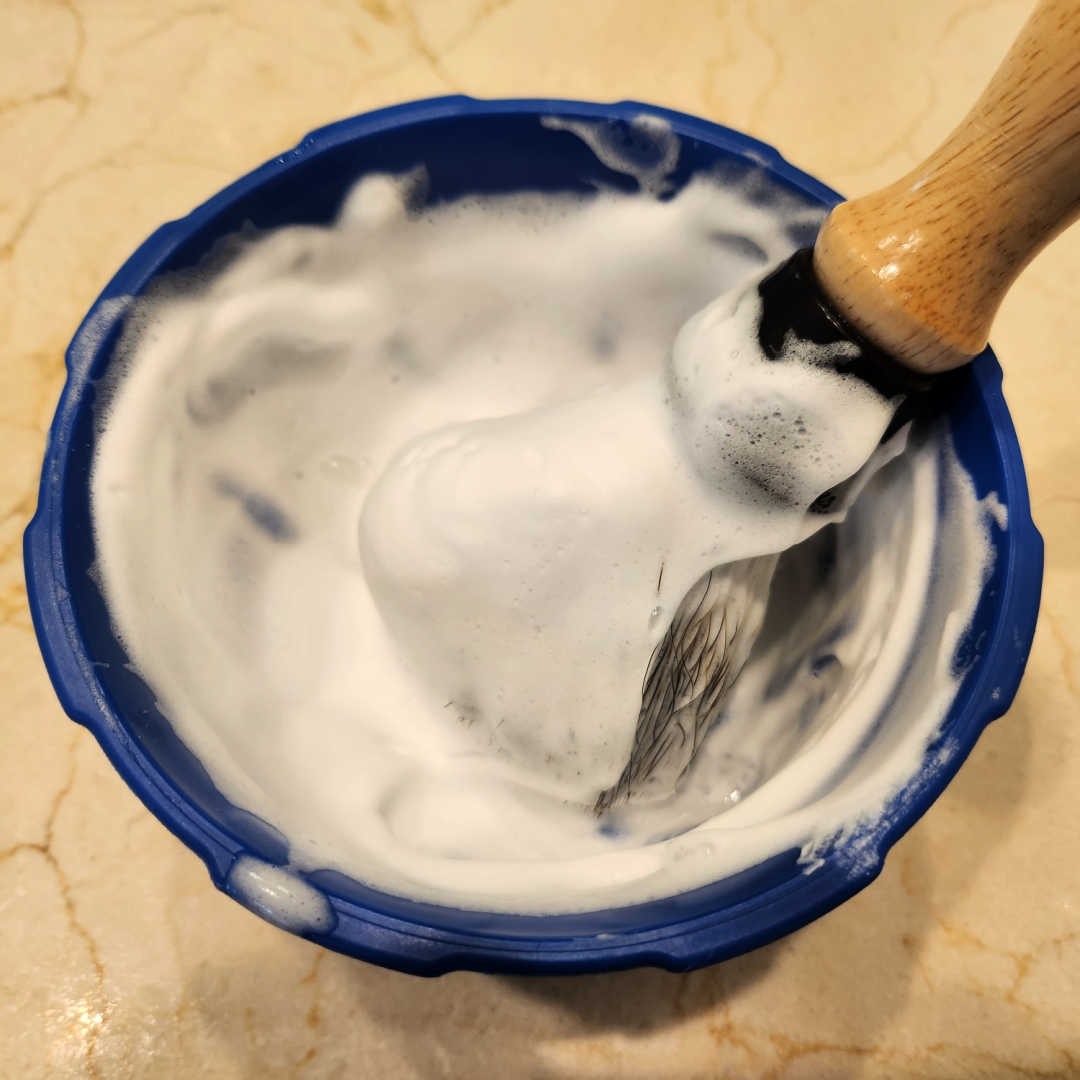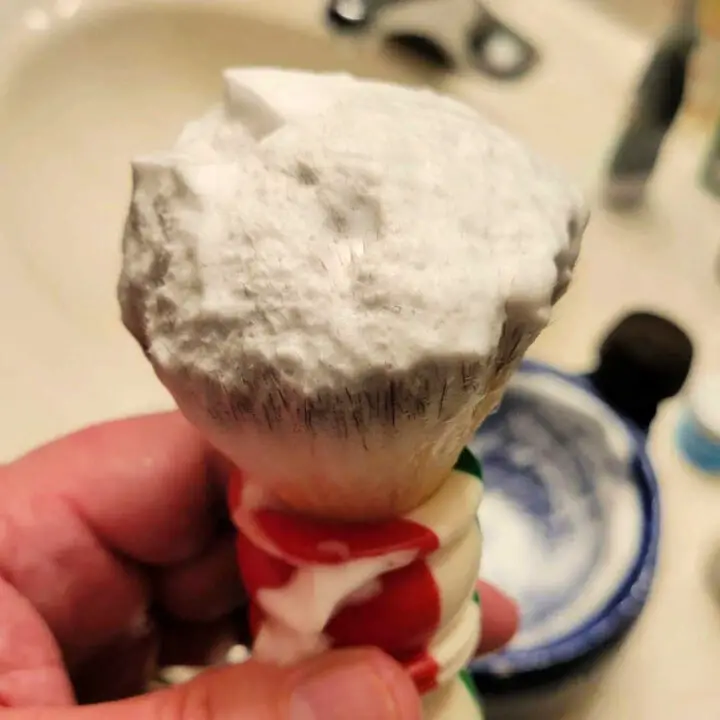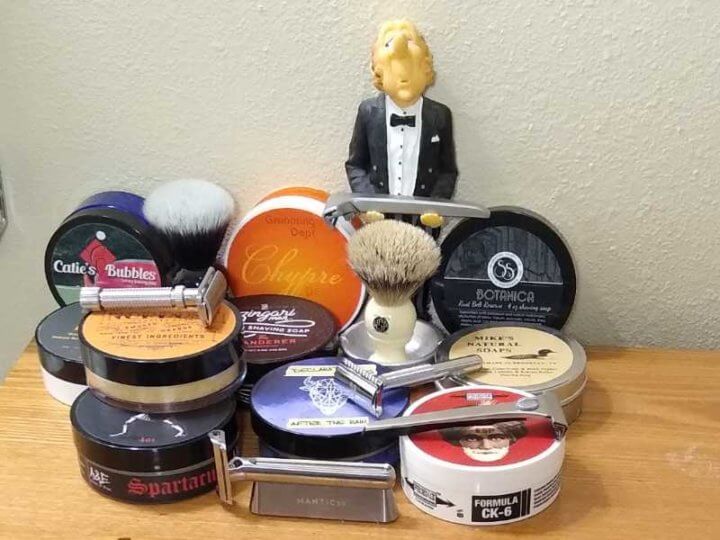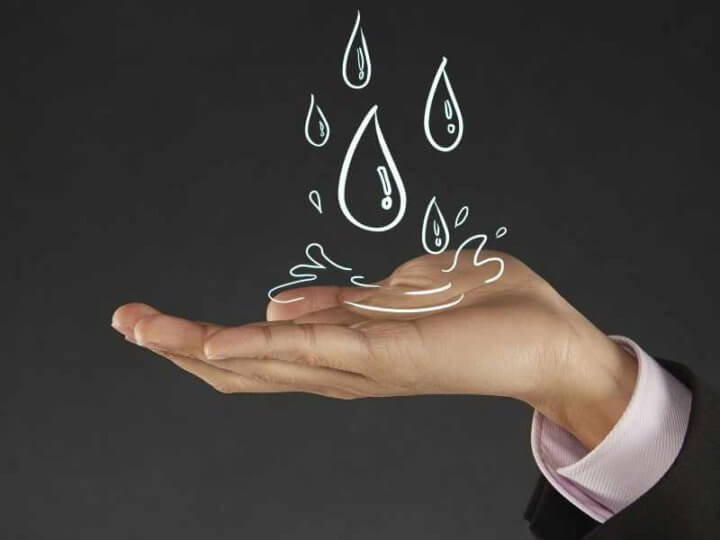
Lathering shaving soap in hard water can sometimes be a challenge, but with the right techniques, you can create a rich, creamy lather that makes your shaving experience much smoother.
Lathering Technique for Hard Water
Building a good lather in hard water can feel like an uphill battle, but it’s definitely achievable with the right approach. Here’s a step-by-step process to help you craft that rich, creamy lather.
Step-by-Step Lathering Process
- Start with Warm Water: Use warm water to wet your brush and face. This helps soften the stubble and ensures better lather absorption.
- Load the Brush: Dip your brush into your shaving soap, swirling it around for about 10-20 seconds. If the soap is hard, you may need to load it a bit longer.
- Add Water Gradually: Begin lathering in a bowl or on your face, adding just a few drops of water at a time. With hard water, it’s easy to overdo it, so go slow!
- Whip It Up: Keep working the lather until you see it transform into a thick, creamy consistency. The key is to keep mixing; your muscles will thank you later!
- Test the Lather: It should feel slick and cushiony. If it’s too airy or dry, add a bit more water and mix again.
Adjusting Techniques

When dealing with hard water, it’s important to tweak your technique slightly:
- Use More Soap: Hard water often requires more product to achieve the same lather as soft water. Don’t be shy—load that brush!
- Longer Mixing Time: Spend a bit longer whipping up your lather. Hard water minerals can inhibit the soap’s ability to foam, so patience is key.
Essential Tools for a Better Lather
Shaving brushes are essential tools for achieving that rich, creamy lather, especially in hard water. When selecting a brush, look for one with densely packed bristles.
Bowl vs. Face Lathering Techniques When Dealing with Hard Water
Choosing between bowl and face lathering often comes down to personal preference. Bowl lathering allows you to control water addition more easily, which is crucial when working with hard water. Start with a damp brush and incorporate soap gradually. On the other hand, face lathering can be more efficient in terms of time, but you may need to adjust your technique to manage the water’s impact on lather quality.
Other Helpful Tools That Can Improve Your Lathering Experience
Consider investing in a lathering bowl with ridges or a scuttle to help build and maintain warmth, which can enhance lather stability. A good water filter can also improve your water quality, making it more compatible with your shaving soap. These tools, combined with the right technique, will significantly elevate your shaving experience in hard water conditions.
Choosing the Right Shaving Soap for Hard Water

Not all soaps are created equal, especially when it comes to lathering in challenging water conditions. Here’s what you need to know to make the best choice.
Best Types of Shaving Soaps Formulated for Hard Water
[Note: Amazon and Barrister And Mann links are affiliate. Geni.us links may be affiliate.]
When selecting a shaving soap, look for ones specifically designed to handle mineral-heavy water. These soaps often have added surfactants and moisturizing agents that help create a rich lather even in tough conditions.
Several brands have developed products that excel in hard water environments. Consider trying:
- Barrister and Mann: They offer a variety of soaps with unique scents and solid performance in tough conditions.
- Stirling Soaps: Their formulations blend natural ingredients and perform well in hard water.
- DR Harris: Known for high-quality, traditional soaps that create good lather regardless of water hardness.
- Catie’s Bubbles
Ingredients to Look For That Combat Hard Water Minerals
Certain ingredients can make a noticeable difference:
- Glycerin: This humectant helps attract moisture and aids in lather formation.
- Coconut Oil: Known for its excellent lathering properties, it works well even in hard water.
- Sodium Cocoate: A natural ingredient that improves lather stability.
Water Modification Strategies

When dealing with hard water, making some modifications to your shaving routine can improve your lathering experience. Here are a few strategies to consider.
Using Filtered Water for Your Shave
One of the simplest ways to enhance your lather is by using filtered water. This option contains fewer minerals than hard water, which means they can help you achieve a richer, creamier lather. Just fill your bowl or sink with this softer water before you start. You’ll likely notice an immediate difference in how well your soap performs.
Simple DIY Water Softening Methods for Shaving
You don’t have to invest in an expensive system to soften your water. Some easy DIY methods include:
- Boiling Water: Boil your tap water and let it cool down. This process can help precipitate some minerals out.
- Baking Soda: Adding a small amount of baking soda can slightly neutralize hardness.
- Epsom Salt: Adding a pinch of Epsom salt can also help soften the water, as it binds with calcium and magnesium.
- Citric acid: adding a pinch of citric acid to your shaving water. This natural acid can help break down mineral buildup and improve lather quality.
Experiment with these methods to find what works best for you!
Understanding Hard Water and Its Effect on Shaving
What is Hard Water?
Hard water is water that contains high levels of minerals, primarily calcium and magnesium. If you notice white, chalky stains on your faucets or a film on your shower doors, you might be dealing with hard water. You can also check for signs like soap not lathering well or soap scum accumulating in your sink.
How Minerals Interfere with Soap Lathering
The minerals in hard water bond with the fatty acids in soap, making it difficult for the soap to create a rich lather. This interaction results in a less effective cleansing experience and can leave your skin feeling dry and irritated. When you’re trying to shave, this can lead to a subpar lather, increasing the chances of nicks and razor burn.
Why Traditional Shaving Soaps Struggle
Traditional shaving soaps often rely on the ability to lather easily. In hard water conditions, they may not perform as expected. The soap can become ineffective due to the mineral content, leading to a thin, weak lather that’s not protective during shaving. This can make the whole experience frustrating and uncomfortable, potentially impacting your shaving routine.
Understanding these aspects of hard water will set the stage for selecting the right shaving soap tailored for your needs and preferences.

My water at home is so hard it eats through metal pipes. I gave up on shaving soap and use shaving cream. Castle Forbes and Taylor of Old Bond Street both work well. I start the lathering in the jar before switching to a marble shaving bowl. I finish by face lathering. I don’t get the “whipped cream” look but does the job.
Does Ariana and Evans shave soap work well with hard water?
I have hard water and I find A&E works well for me.
I have very hard water and I struggle to get a decent lather with hard shaving soap, so I tend to use shave cream instead and I find TOBS lathers up extremely well.